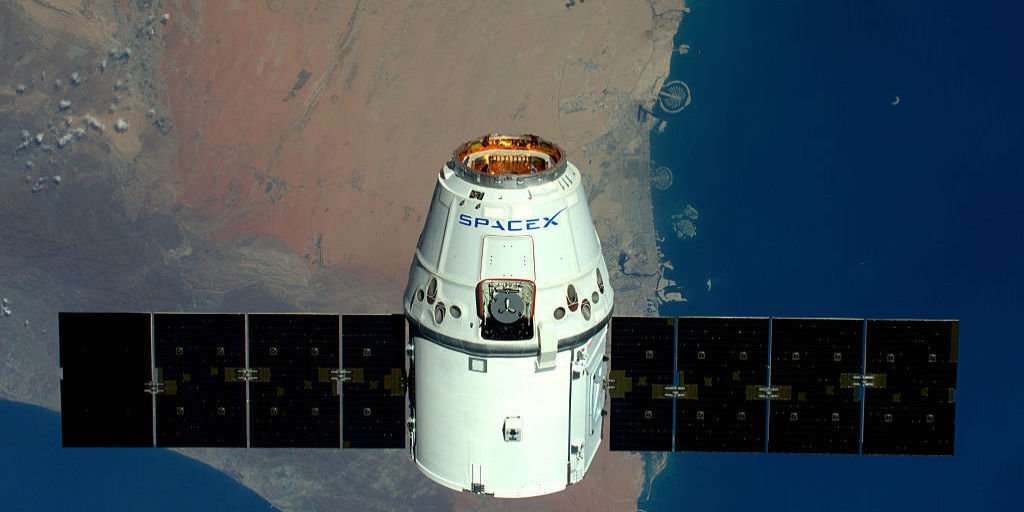When a SpaceX Dragon spacecraft connected with the International Space Station on May 25, 2012, it made history as the first privately-built spacecraft to reach the ISS. The Dragon was the result of a decision 6 years prior—in 2006, NASA made an "unprecedented" investment in SpaceX technology. A new financial analysis shows that the investment has paid off, and the government found one of the true bargains of the 21st century when it invested in SpaceX.
A new research paper by Edgar Zapata, who works at Kennedy Space Center, looks closely at the finances of SpaceX and NASA. "There were indications that commercial space transportation would be a viable option from as far back as the 1980s," Zapata writes. "When the first components of the ISS were sent into orbit 1998, NASA was focused on "ambitious, large single stage-to-orbit launchers with large price tags to match."
Then in 2003 the Space Shuttle Columbia, a pricey orbiter that had made several trips to space, exploded upon reentry, killing the seven astronauts aboard. The Space Shuttle program was suspended and the expanded construction of the ISS was halted. The next year, President George W. Bush delivered his administration's "Vision for US Space Exploration," which called for NASA to "acquire cargo transportation as soon as practical and affordable to support missions to and from the International Space Station." This led to the creation of the NASA Commercial Orbital Transportation Services (COTS), which led to the investment in SpaceX.
Zapata estimates that SpaceX launches cost NASA around $89,000 per kilogram of cargo delivered to the space station. There's no telling what precisely would have come from a cargo spacecraft developed by NASA, but Zapata estimates that it would be $272,000 per kg.
For future commercial crew missions sending astronauts into space, Zapata estimates that it will cost $405 million for a SpaceX Dragon crew deployment of 4 and $654 million for a Boeing Starliner, which is scheduled for its first flight in 2019. That sounds like a lot, and it is, but Zapata estimates that its only 37 to 39 percent of what it would have cost the government.
NASA's initial 2006 investment, as well as further investments in the company in 2011 and 2014, have had profound benefits beyond the ISS. They have allowed SpaceX to become a global company, working with nations across the globe. "Considering NASA invested only about $140M attributable to the Falcon 9 portion of the COTS program, it is arguable that the US Treasury has already made that initial investment back and then some merely from the taxation of jobs at SpaceX and its suppliers only from non-government economic activity," Zapata says.
All this positive financial ground can only be good news for SpaceX, which has set its bar extremely high as a company. Founder Elon Musk wants to use the company to get to Mars, a vision he's detailed in a speech titled Making Humans a Multiplanetary Species. "Right now we are estimating about $140,000 per ton for the trips to Mars," Musk said in that speech. "If a person plus their luggage is less than that, taking into account food consumption and life support, the cost of moving to Mars could ultimately drop below $100,000."
Only a couple hundred thousand per person to Mars is quite the ambitious estimate, but the company has proven it can significantly reduce the cost of spaceflight.

InnocuouslyLabeled on November 14th, 2017 at 22:51 UTC »
And NASA helped get SpaceX off the ground, and continues to help them develop their tech.
http://beta.latimes.com/business/la-fi-spacex-nasa-20170301-story.html
Win-win.
paulreverendCA on November 14th, 2017 at 20:53 UTC »
Where did the cost savings come from?
iamcerberus on November 14th, 2017 at 19:30 UTC »
This research paper by Edgar Zapata looks closely at the finances of SpaceX and NASA.